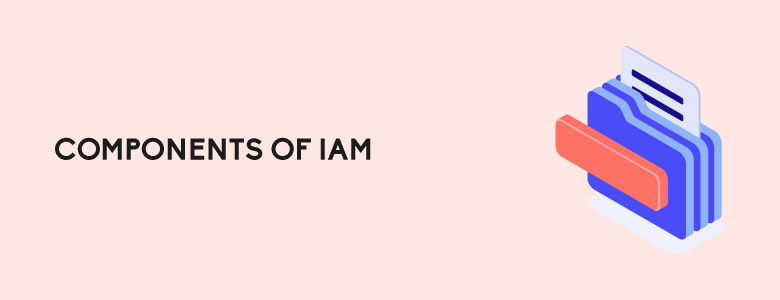In today’s digital world, with frequent data breaches and cyber threats, Identity and Access Management (IAM) is crucial for protecting a company’s assets. IAM involves processes, policies, and technologies that control who can access what, when, and why. It focuses on managing user identities, confirming their identity, and deciding what they can access.
Importance of Identity and Access Management

IAM holds immense importance for businesses across various industries, especially in the Philippines, where stringent data protection regulations like the Data Privacy Act of 2012 are in place. Here’s why IAM is crucial:
Security Enhancement
IAM significantly enhances security by controlling and monitoring user access to critical systems and data. It ensures that only authorized users can access sensitive information, reducing the risk of unauthorized breaches and data leaks.
Compliance
For businesses in the Philippines, complying with data privacy regulations is paramount. IAM helps organizations enforce access policies that align with regulatory requirements, ensuring data protection and privacy compliance.
Operational Efficiency
Efficient IAM practices streamline user provisioning and de-provisioning processes, reducing administrative overhead and improving productivity. With IAM, businesses can manage user access more effectively, ensuring employees have the necessary resources to perform their duties without compromising security.
Components of IAM

To understand IAM fully, let’s delve into its core components:
Identity Provisioning
Identity provisioning is a foundational aspect of IAM. It involves the management of user identities and their associated access rights throughout their lifecycle within an organization. This includes creating, modifying, and deleting user accounts as per organizational requirements.
During the onboarding process, identity provisioning ensures that new employees receive the necessary access to systems and applications relevant to their roles. This process involves assigning appropriate permissions based on job functions, ensuring employees have the tools they need to be productive from day one.
Identity provisioning also encompasses modifying user access as roles change or evolve within the organization. For example, when an employee is promoted or transferred to a different department, their access rights should be adjusted accordingly to align with their new responsibilities.
Lastly, identity provisioning involves de-provisioning user accounts when employees leave the organization or no longer require access to certain resources. This is crucial for security and compliance, ensuring that ex-employees cannot access confidential data post-employment.
Authentication and Authorization
Authentication and authorization are fundamental to IAM, ensuring that only authenticated users with the appropriate permissions can access organizational resources. Authentication verifies the identity of users attempting to access systems or applications. This can be achieved through various methods, including:
Password-based authentication: Users provide a unique password.
Multi-factor authentication (MFA): Requires users to provide additional verification factors, such as a one-time password (OTP) sent to their mobile device.
Authorization follows authentication and determines what actions or resources a user is allowed to access based on their authenticated identity. Authorization policies are typically defined based on the user’s role, group membership, or specific attributes.
Implementing robust authentication and authorization mechanisms is critical for preventing unauthorized access and protecting sensitive data.
Access Management Models
IAM employs different access management models to control user access effectively:
Role-based Access Control (RBAC): Assigns permissions based on predefined roles within the organization. Users are granted access based on their roles, streamlining access management and reducing the risk of unauthorized access.
Attribute-based Access Control (ABAC): Grants access based on specific attributes or characteristics of the user, such as department, location, or device. ABAC provides more granular control over access permissions, allowing organizations to implement dynamic access policies based on contextual attributes.
Single Sign-On (SSO)
Single Sign-On (SSO) is a key feature of IAM that enhances user experience and security. SSO allows users to authenticate once and gain access to multiple applications or systems without the need to re-authenticate for each resource.
In the Philippine business landscape, where organizations rely on a myriad of applications and systems, SSO simplifies user access management and improves productivity by reducing the number of passwords users need to remember.
Implementing SSO also enhances security by centralizing authentication processes and reducing the risk of password-related vulnerabilities.
Multi-factor Authentication (MFA)
Multi-factor Authentication (MFA) is an essential security measure in IAM. MFA requires users to provide multiple forms of verification to access systems or applications, adding an extra layer of security beyond traditional password-based authentication.
In the Philippines, where cybersecurity threats are prevalent, implementing MFA is crucial for protecting sensitive data and preventing unauthorized access. Common MFA methods include:
Biometric authentication: Verifying identity through fingerprints, facial recognition, or iris scans.
Hardware tokens: Generating one-time passwords (OTPs) that users must enter alongside their passwords.
MFA significantly enhances security by mitigating the risk of credential theft and unauthorized access, making it an indispensable component of effective IAM strategies.
Want to learn more about IAM or ZTNA solutions? Contact us at marketing@ctlink.com.ph to schedule a meeting with us today!


One Response